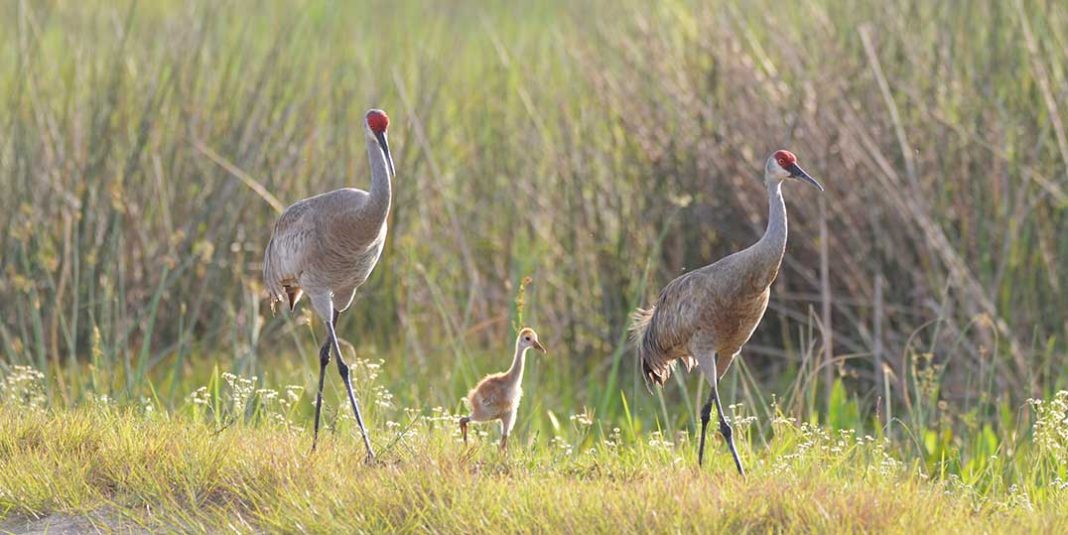OTTAWA – Members of the Ontario Soil and Crop Improvement Association (OSCIA) were provided an update on the Sandhill crane issue and current research being conducted by the Canadian Wildlife Service (CWS) Environment and Climate Change Canada (ECCC). That research outlined work that is tentatively expected to be carried out on Manitoulin Island later this year at their 2020 annual conference held last week.
Christopher Sharp, population management biologist with Canadian Wildlife Service Environment and Climate Change Canada, told the Recorder after the meeting, “the Soil and Crop Improvement Association had provided funding and we are carrying out a large telemetry study using GPS transmitters. We’re collecting movement data (of Sandhill cranes) to quantify and examine habitat use relative to agriculture lands and the potential risks for conflicts between producers (and the cranes). We are also doing a large scale study of movement data to look at breeding, staging and how the timing of (cranes) migration leads to conflict between producers and the birds.”
The study is a collaboration between CWS Ontario, CWS Quebec and the University of Waterloo (the Dr. Brad Fedy Lab, with the work being carried out by Kelly McLean, a PHD student at the university).
“The objectives of the study are to answer small- and large-scale movement questions relating to agricultural land use in areas with conflicts involving cranes,” Mr. Sharp told the Recorder. He explained, “this past fall we put transmitters on 24 Sandhill cranes, 10 on the Quebec side near Abitibi Lake and transmitters on 14 birds in the Temiskaming area. All the transmitters are working very well. We have one bird that is remaining in Ontario at Long Point in Lake Erie, with the remaining 23 all in the US side—from southern Michigan to Florida.”
“For 2020, we are tentatively planning to deploy transmitters along the Highway 17 corridor in Northern Ontario, including the area from Sudbury to Echo Bay and including Manitoulin Island for Ontario and the Quebec CWS may do something there as well (during August-October),” Mr. Sharp told the Recorder. He pointed out, “several cranes from the Abitibi Lake and the Temiskaming area stopped on the North Shore or Manitoulin this past fall, although it was not a prolonged stay.”
Work will continue over three years, with a couple of years to gather the data, continued Mr. Sharp. “The goal of the study is to provide improved guidance (recommendations) to producers regarding on-farm mitigation. Everything indicates on-farm mitigation might be the most effective way to deal with Sandhill cranes. A (Sandhill crane) hunting season would not be a practical tool to use.”
“The end goal of the project is to learn more about SACR in Ontario/Quebec and improve guidance to providers regarding on-farm mitigation,” said Mr. Sharp. “Recommendations will be made to producers. We are working closely with the agriculture sector and will be sharing the information we gather as it comes in to help provide some insight on what can be done to mitigate conflicts.”
Mr. Sharp also commented on a new seed additive that is used in the US to discourage birds including Sandhill cranes from destroying crops in Ontario/Canada. “The (OSCIA) is looking at how to get that here. It seems to be working well in some places where there has been crane damage and in research carried out, they (Sandhill cranes) make up a good percentage of the damage on Manitoulin Island farmers’ crops.”





